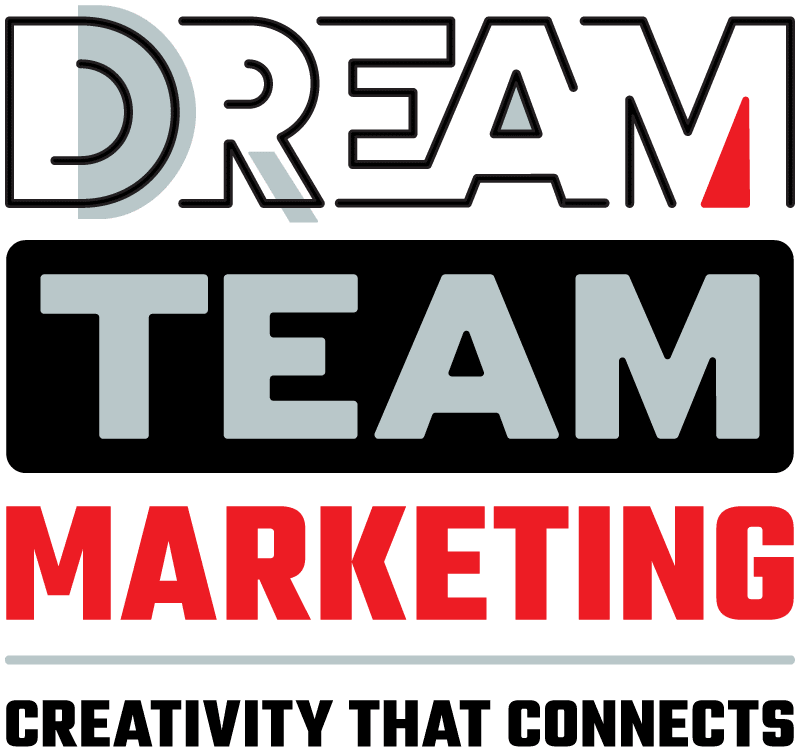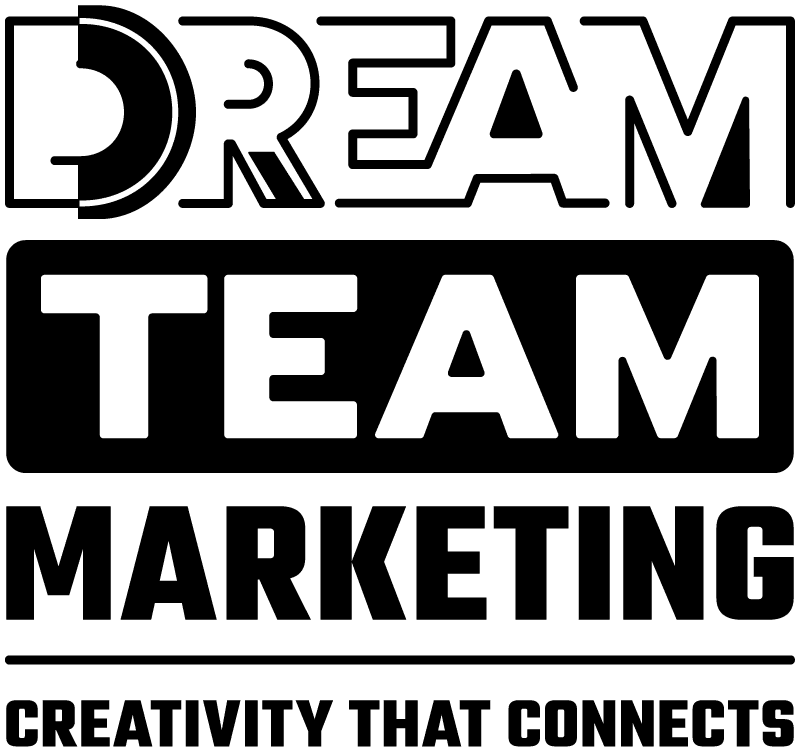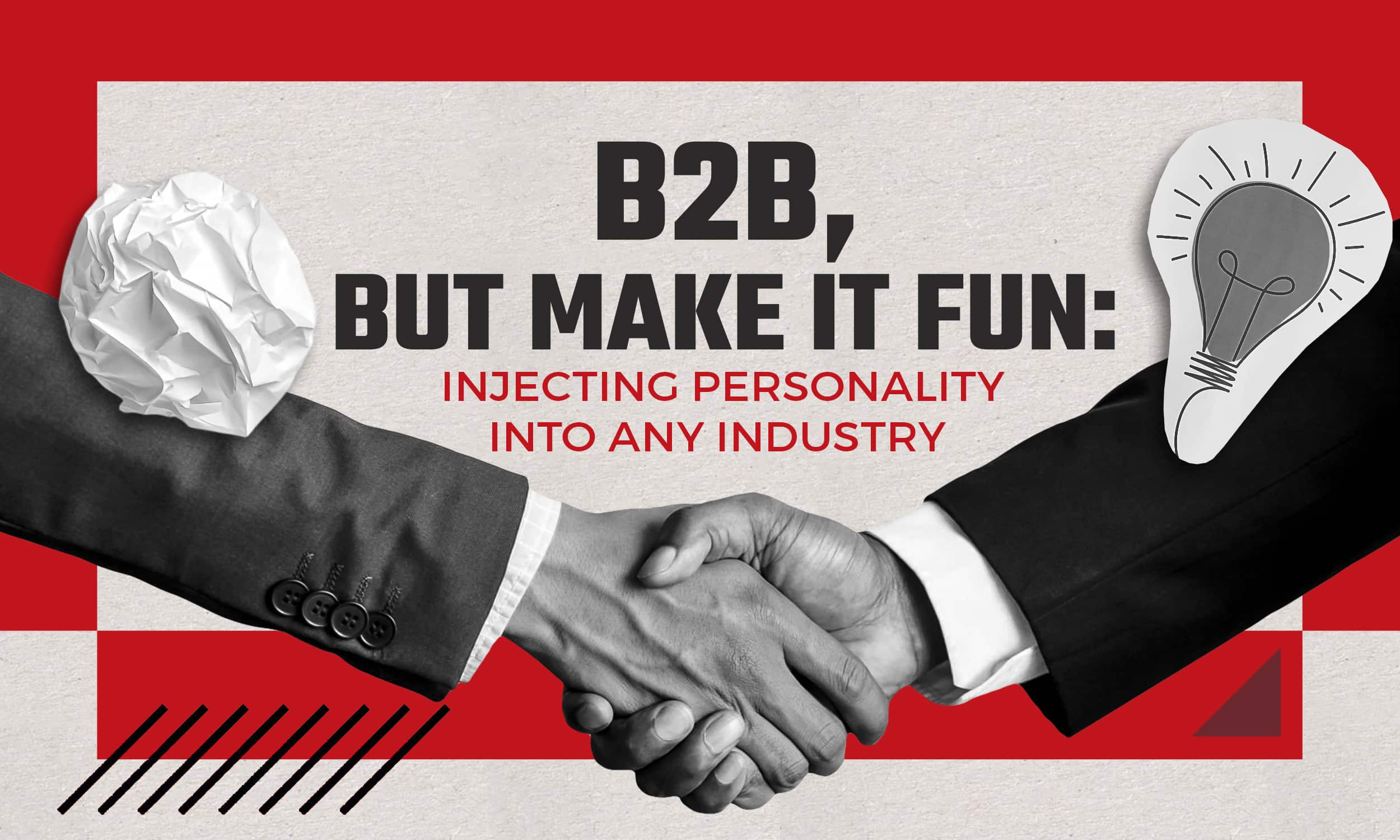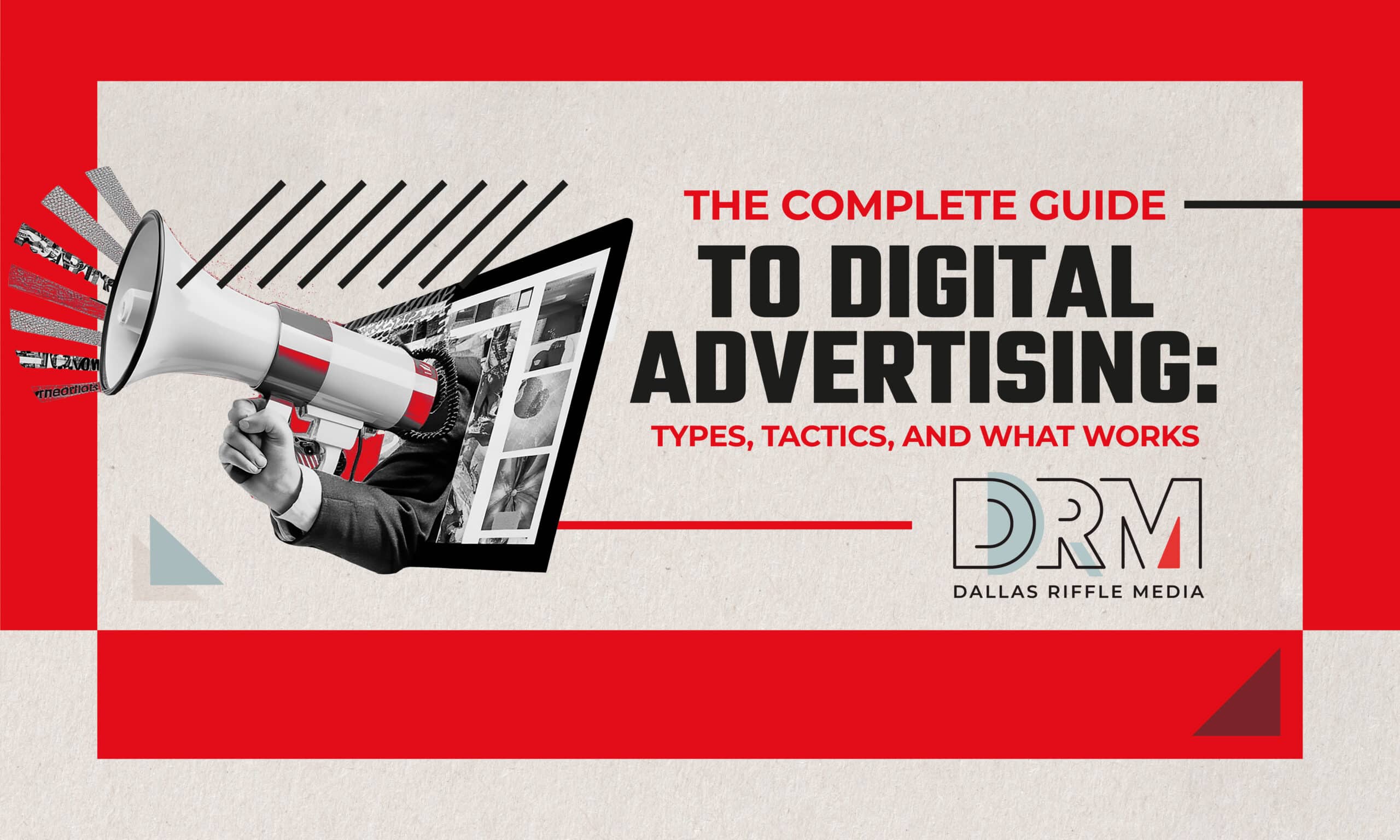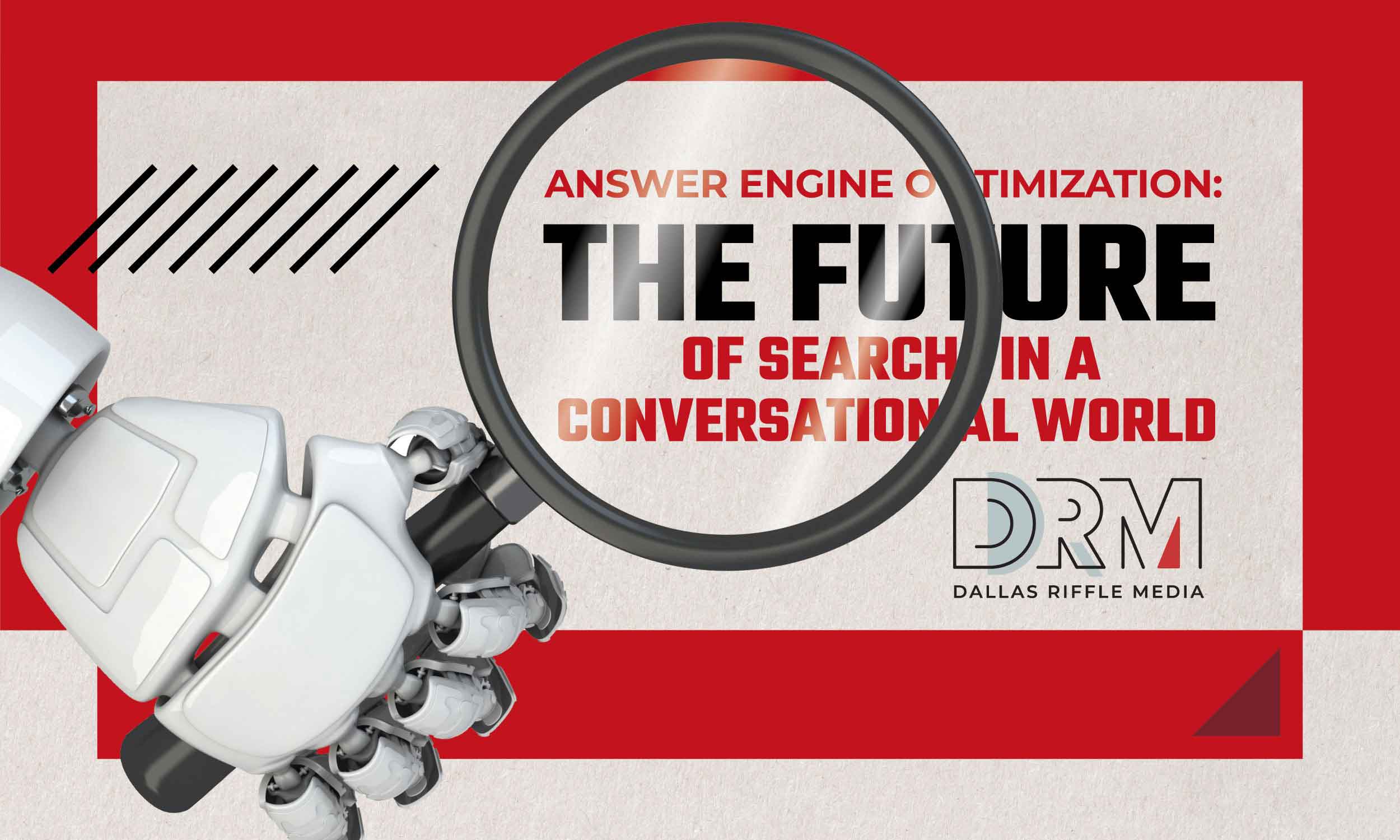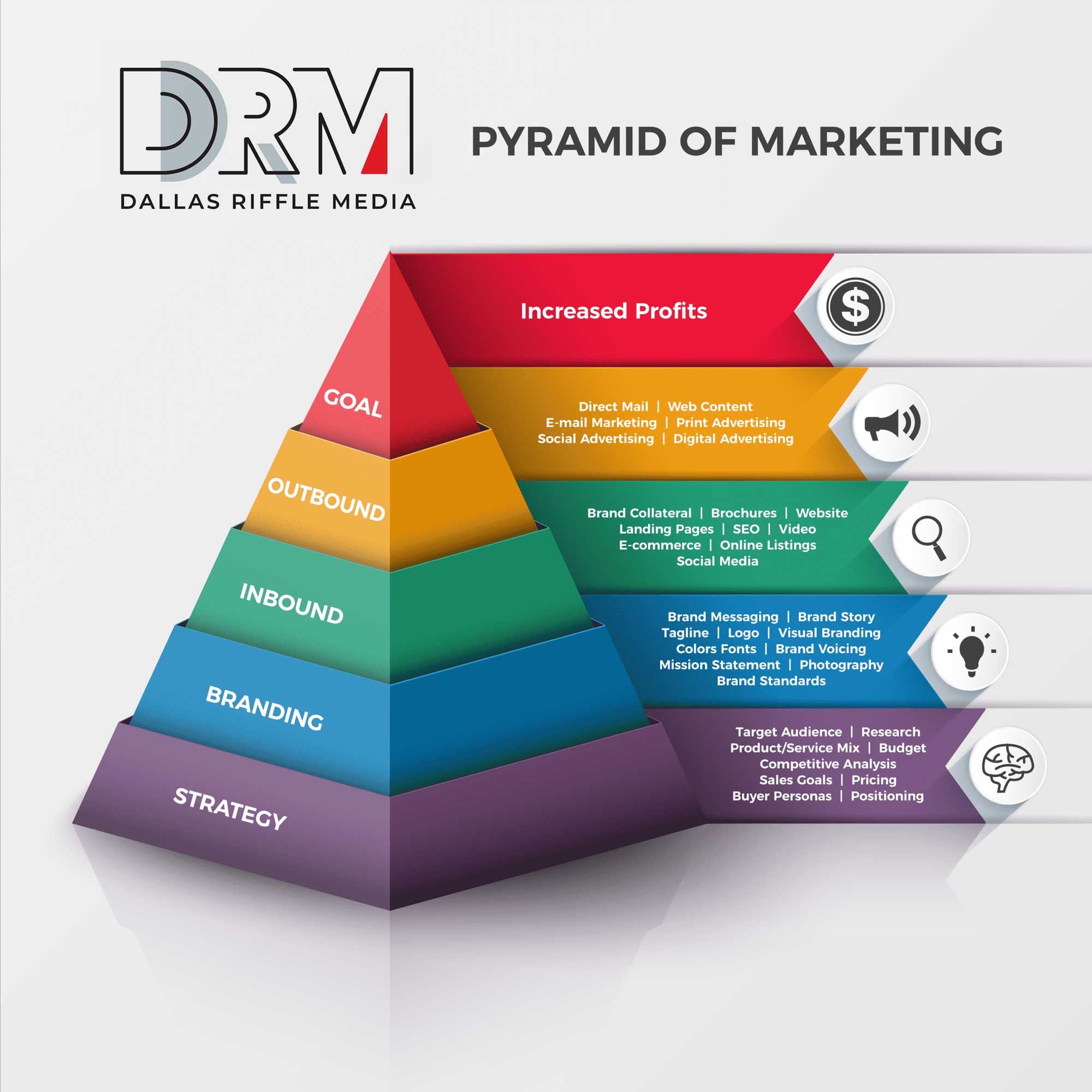
Pyramid of Marketing – Building Your Brand
In the previous part of our featurette on DRM’s “Pyramid of Marketing” concept, we provided a few tips for building a baseline strategy for your marketing plan. After compiling research and building the desired target audience to augment your brand’s strategy, it’s time to start fleshing out your company’s branding. While many people think of branding simply as a logo or a slogan, the concept goes quite a bit deeper than that. The American Marketing Association defines branding as, “A name, term, design, symbol, or any other feature that identifies one seller’s good or service as distinct from those of other sellers.” Essentially your company’s branding encompasses how you want your customers to identify and feel about your company. While branding is something that takes time and a lot of work to establish, there are several strategies you can take to start building your brand.
Brand Messaging
One of the most important overarching themes to consider when building up your branding is your brand messaging. Your brand messaging refers to the underlying value proposition conveyed by your branding. Brand messaging typically starts with a simple tagline. A great tagline not only summarizes a company’s philosophies but also have visual designs that reinforce them. Before starting to work on the visual design, consider what you want your message to convey to your customers. Consider what themes, feelings and vibes you want to be associated with your company.
Tagline
As previously mentioned, an effective way to convey your brand messaging is through the use of a tagline. A tagline is a catchphrase or slogan that is used in advertising to convey a message about a brand. Think of a tagline as a micro-summary of your brand. A great tagline should be concise yet memorable. Consider popular brands such as Apple’s “Think Different” tagline or Nike’s “Just Do It” taglines. Not only are these taglines iconic but they also give a brief look at the company’s values. While it’s difficult to craft a message as memorable as these, it is still possible to create a tagline that conveys your desired brand messaging.
While creating a tagline can be very difficult, it can also be a very powerful exercise for evolving your marketing message. When creating a tagline, you must consider exactly what you do for your customers better than any other brand. One step you can take toward crafting your perfect tagline is to summarize your business in 2-3 short sentences, then take what you’ve written and trimmed it down… then trim it down again. Review what you’ve arrived at and ask yourself if it’s a memorable statement that fully encompasses your brand messaging. Oh- and don’t forget to check with the United States Patent and Trademark Office to make sure your tagline is not already spoken for! After you’ve decided on a tagline, it can be used as one of the baseline ideas in all of your brand’s future marketing efforts.
Brand Voice
Another important pillar of your brand’s DNA is its brand voice, that is to say, the defining personality that governs how your brand “speaks” to its clients, prospects and the world at large. At DRM, we believe that crafting your brand voice is an absolutely essential exercise. It will be an element that flows through every form of collateral in your marketing plan.
Think about it this way: if your brand were a person, what kind of person would they be? How would they interact with friends? Strangers? What makes them memorable or attractive?
Having a strongly defined brand voice helps your website, brochure or commercial be a more effective and consistent “warm handshake” on behalf of all the people that make up your brand.
Visual Branding
While the words used to communicate your company’s message is a key step of the branding process, the visuals used hold equal importance. Where your tagline directly communicates to your customers, your visual branding is more subconscious. The colors, fonts and images used in your marketing materials should add up to create a certain look and feel that is consistent with your messaging. Once you’re able to decide on which direction you want to take your visual branding, it will become easier to flesh out your branding with other marketing materials.
The baseline of most visual branding is your logo. While there is a lot to consider when crafting a logo for your brand, you first want to consider your brand message and try to create a design that summarizes this message into one symbol or image. An effective logo needs to be simple, memorable, timeless and versatile. Since a logo is used so consumers can identify your brand, your logo needs to be simple enough so those who see it can easily recall it. It’s also important for your logo to be able to be used in both color or grayscale. With printed materials sometimes only allowing one color versions of logos, you must design your logo so it can be used for any type of materials you may need. And finally, your logo must be timeless enough that it can remain relevant throughout the years. While it is normal for companies to introduce new versions of their logo over time, the main idea behind the logo should stay the same. For instance, take a look at how Apple’s logo has evolved over the years.
Along with the basic assets that make up your branding such as your logo, colors and fonts, you may want to consider other key visual elements to go with your branding. Do you have specific photos that you’d like associated with your brand? Is there a certain style to photography? You may even want to associate certain products you have with your branding. Does your brand have a key figurehead or spokesperson that you want to be used in your marketing? Some companies even go as far as showing photos of their office that is decorated to be congruent with their branding. Any and all visual elements that you want to be associated with your company are part of your visual branding.
Brand Standards
Once the branding for your company has been decided upon, it is helpful to create a brand standards guide. This guide is an internal corporate document used to ensure that a company’s branding is kept consistent across all media and marketing channels. A brand standards guide covers all aspects of branding including visual branding, mission statement, vision, voicing, target audience, brand personality, etc. For longer companies having these standards in place is very important. With so many people working on materials using company branding, it can sometimes be difficult to keep branding consistent. These guidelines help to simplify this process.
Creating an internal guideline for your company’s brand identity helps to ensure that all of your materials align with your brand’s messaging. Establishing concepts like your brand’s mission, vision, target audience, core values and brand personality can assist copywriters and marketing managers with staying consistent with the previously established messaging. Whenever your brand has an outward facing correspondence with a customer or prospect, it should align with the standards established within this part of the document. These standards can also help to shape the overall corporate culture of your company. When a company’s values are clearly established internally, employees will see this and your corporate culture will begin to form. Not only does communicating these values internally help with marketing but it also helps to strengthen and reinforce your branding (and culture) internally.
